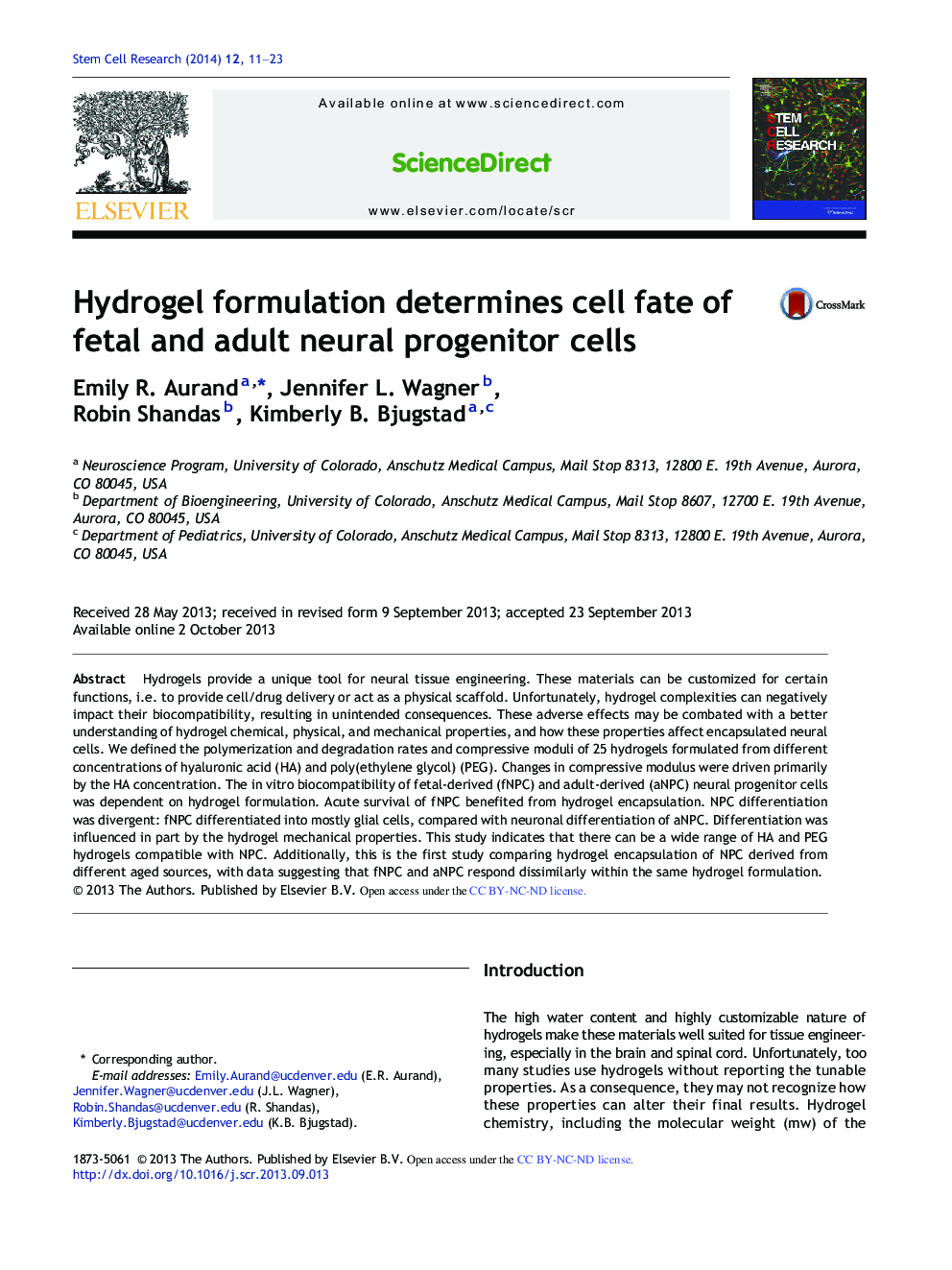| Article ID | Journal | Published Year | Pages | File Type |
|---|---|---|---|---|
| 2094578 | Stem Cell Research | 2014 | 13 Pages |
•HA and PEG hydrogels have compressive moduli similar to rodent brain tissue.•fNPC obtain greater acute benefit from hydrogel encapsulation than aNPC.•aNPC differentiate into neurons in hydrogels vs. the glial fates of fNPC.•Differentiation of NPC is dependent in part on hydrogel compressive modulus.
Hydrogels provide a unique tool for neural tissue engineering. These materials can be customized for certain functions, i.e. to provide cell/drug delivery or act as a physical scaffold. Unfortunately, hydrogel complexities can negatively impact their biocompatibility, resulting in unintended consequences. These adverse effects may be combated with a better understanding of hydrogel chemical, physical, and mechanical properties, and how these properties affect encapsulated neural cells. We defined the polymerization and degradation rates and compressive moduli of 25 hydrogels formulated from different concentrations of hyaluronic acid (HA) and poly(ethylene glycol) (PEG). Changes in compressive modulus were driven primarily by the HA concentration. The in vitro biocompatibility of fetal-derived (fNPC) and adult-derived (aNPC) neural progenitor cells was dependent on hydrogel formulation. Acute survival of fNPC benefited from hydrogel encapsulation. NPC differentiation was divergent: fNPC differentiated into mostly glial cells, compared with neuronal differentiation of aNPC. Differentiation was influenced in part by the hydrogel mechanical properties. This study indicates that there can be a wide range of HA and PEG hydrogels compatible with NPC. Additionally, this is the first study comparing hydrogel encapsulation of NPC derived from different aged sources, with data suggesting that fNPC and aNPC respond dissimilarly within the same hydrogel formulation.
